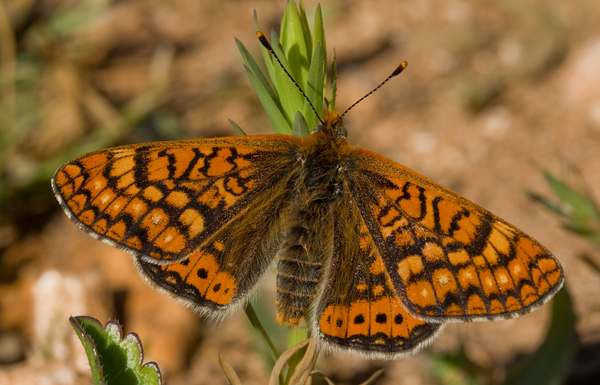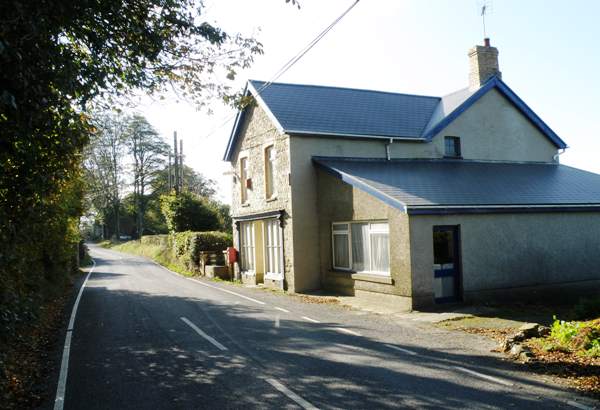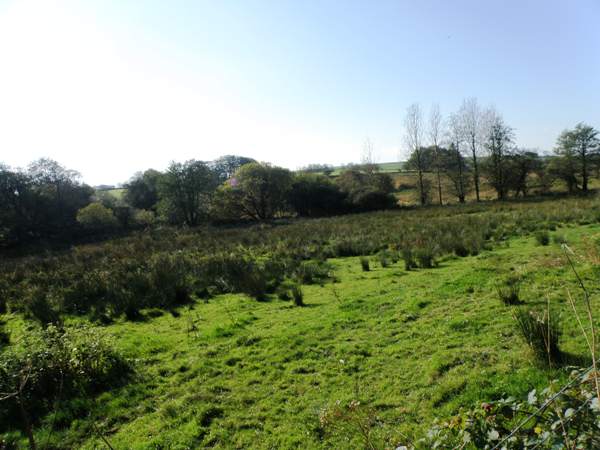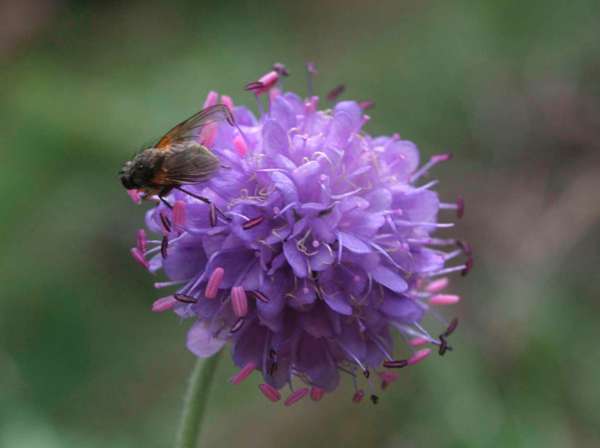Rhos Llawr Cwrt National Nature Reserve, Near Aberaeron, Ceredigion
Designations: SSSI
Below: The Marsh Fritillary Butterfly - picture Rob Petley-Jones

This relatively small NNR is an absolute gem and is home to possibly the largest colony of Marsh Fritillary Butterflies Euphydryas aurinia in Britain. Other butterfly species thrive there, too, along with numerous dragonflies and damselflies, so if you are interested in insects this NNR cannot be missed.
Of course, good insect life presupposes good plantlife without which insects cannot survive, and Rhos Llawr Cwrt is home to very special plants including the internationally threatened Slender Green Feather Moss Hamatocaulis vernicosus.
Purple Moor Grass is a dominant feature of the Reserve, and in its tussocks lives the diminutive Harvest Mouse (Micromys minutus) which is, no doubt, one of the reasons why Barn Owls Tyto alba are frequently seen hunting across the pastures.
The small Bwdram Stream runs through the reserve, and signs of Otters Lutra lutra have been observed on its banks.
The site is owned and managed by Natural Resources Wales (NRW).
Directions
Grid Ref: SN4411496
From Aberaeron take the A487 towards Cardigan. At the Synod Inn crossroads turn left onto the A486 towards Llandysul and then almost immediately turn left again towards Talgarreg on the B4338.
Once in the village of Talgarreg continue through the village but do not take the left turn onto the continuation of the B4338. Turn right about 500m (1/4 mile) beyond the disused Post Office (see picture below right) and continue down the lane signed towards Crug Eryr Isaf Holiday Cottages for approximately 1km (2/3 mile).
Turn left into the lane signed towards Llawcwrt Farm and then follow signs to the car park where is parking for only 6 vehicles. Cars are not to drive or park beyond the designated parking area.
Below: Turn right after the disused Post Office at Talgarreg

Access
There is a track running through part of the reserve, but the going is wet underfoot at best and boggy and hazardous at worst. Visitors are welcome but please take note that some areas are grazed by cattle and their calves, and others are dangerous.The farmhouse and outbuildings are private property and visitors are requested not to wander around the yard.
Dogs are not permitted in this nature reserve.
Stout, waterproof shoes are a necessity when visiting Rhos Llawr Cwrt NNR.
Facilities
There are no public toilets on site.
Shops, pubs and cafés can be found in the surrounding villages and also at Aberaeron.
Description of Site
Below: Autumn at Rhos Llawr Cwrt NNR

The Welsh word Rhos is taken to mean rough and usually wet pasture in this part of Wales, and the tradition of grazing ponies and cattle on the land at Rhos Llawr Cwrt continues as part of the management of the site and helps to keep rank vegetation under control.
There is a small area of oak woodland within the NNR, and other habitats include peatland, bog and sedge-rich grassland.
The wet areas have Wild Angelica Angelica sylvestris growing there, and in the slightly drier areas there are Heath Spotted-orchids Dactylorhiza maculata and Northern Marsh-orchids Dactylorhiza purpurella flowering in late May and June.
Below: Devil's-bit Scabious is the food plant of the caterpillars of the Marsh Fritillary Butterfly

The plant that makes this NNR so attractive to the Marsh Fritillary Butterflies is Devil's-bit Scabious Succisa pratensis - the food plant of that butterfly's caterpillars. A visit in late August is the best time to see the caterpillars feeding on the plant, but if you visit on a sunny day in late May or June you may, in a good year, see large numbers of adult Marsh Fritillaries.
Other butterflies that put in an appearance on the Reserve are the Green Hairstreak Callophrys rubi and the Small Pearl-bordered Fritillary Boloria selene.
Some of the other plants that make this reserve such a special place include Whorled Caraway Carum verticillatum, Sneezewort Achillea ptarmica, Bitter Vetch Vicia orobus, Heath Milkwort Polygala serpyllifolia and Common Marsh-bedstraw Galium palustre.
Rhos Llawr Cwrt NNR is a lovely nature reserve to visit in the summer when the pastures are ablaze with wildflowers and the air is alive with the buzzing of insects.